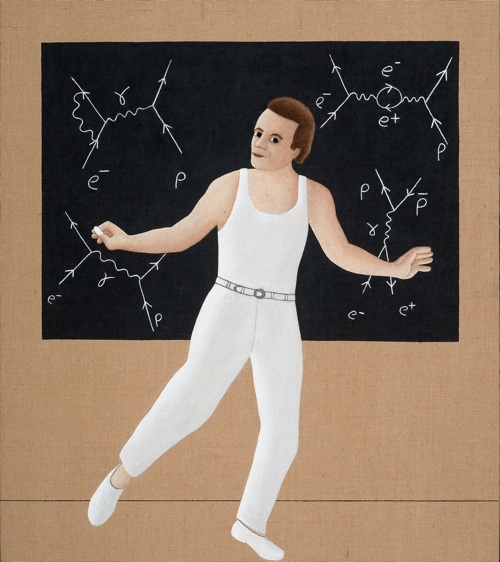Richard Feynman (1918-1988) was a physicist, drummer, dancer, artist, safecracker, and best-selling author. He was the creator of the Feynman diagrams, an insightful and original way of visualizing complex quantum mechanical processes. He was awarded the Nobel Prize in 1965 for his contributions to quantum electrodynamics. He liked gambling and beautiful women as much as he liked physics. As a young man, Feynman worked on the Manhattan Project and later in life contributed to an understanding of the reasons for the Challenger disaster.
Feynman diagrams describe visually how sub-atomic particles interact. Although they may look like petroglyphs from an ancient civilization, they represent complicated mathematical calculations. Feynman was visual in his approach to physics. He created a mental picture of the process he was analyzing and the picture provided a direct path to the most efficient way of calculating the answer.
Although he avoided most of the duties expected of a professor, Feynman was a great teacher. He was drawn to the unknown and always sought to be "something I’m not." He was willing to work as a teaching assistant in the Caltech biology department and worked for a start-up computer company.
He was profoundly able to see how everything in the Universe is connected to everything else. Although he explained new things about the physical world, he never seemed to lose sight of the mysterious. Hans Bethe said, "Feynman depressed is just a little more cheerful then any other person when he is exuberant."

